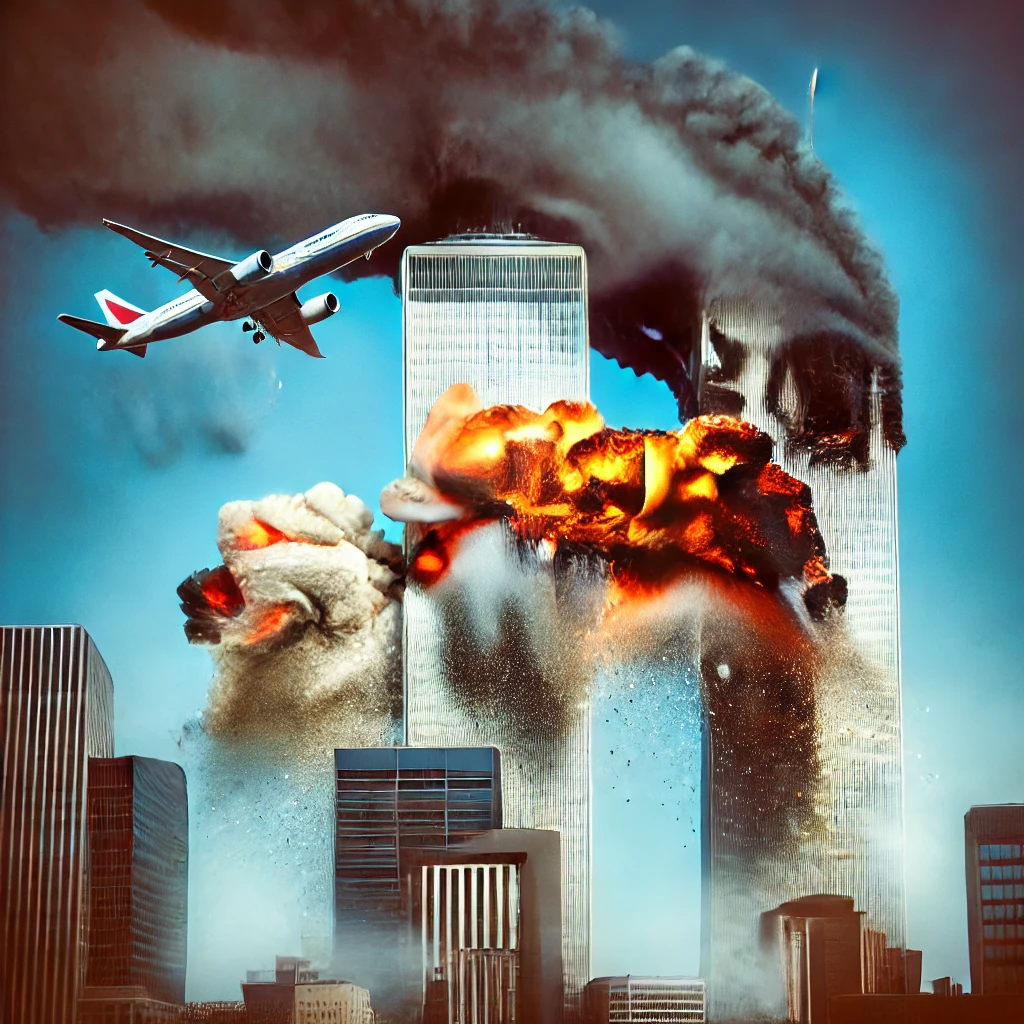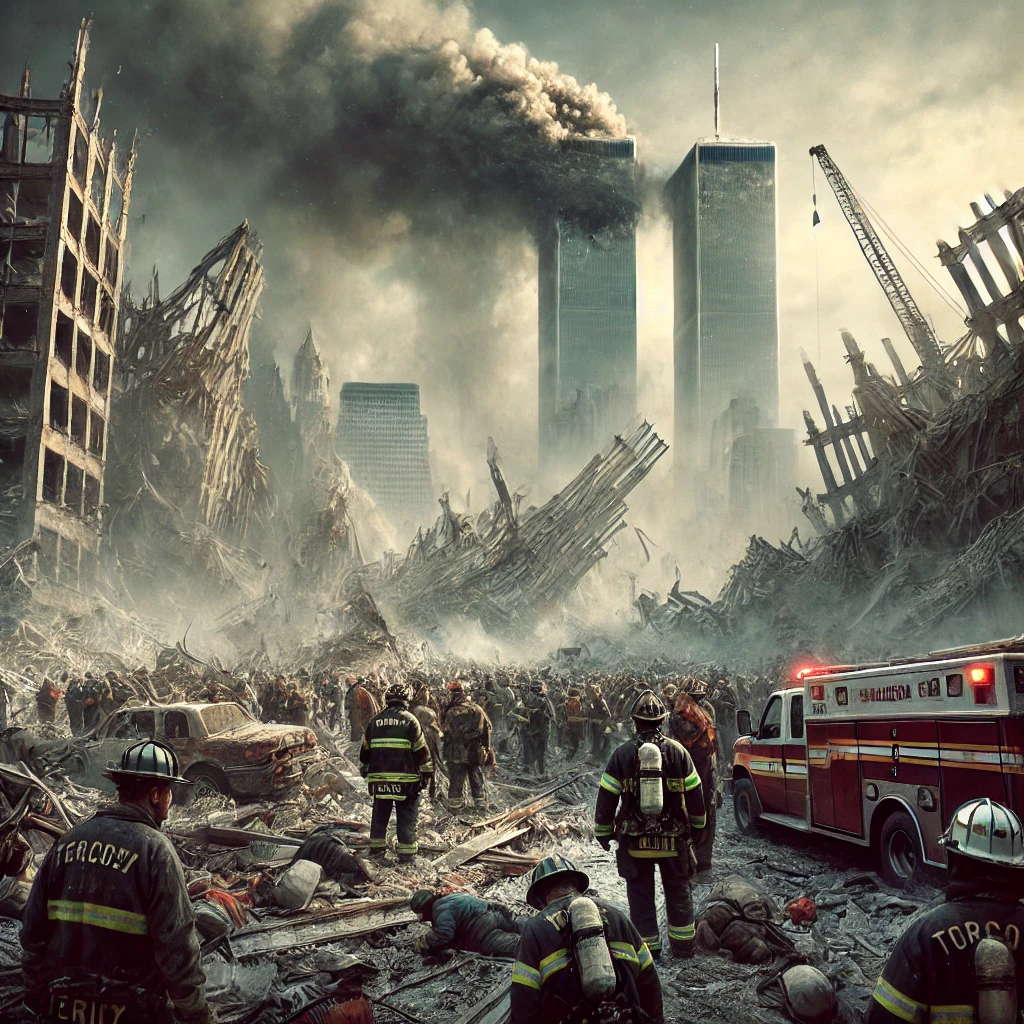On September 11, 2001, the world witnessed a catastrophic and unprecedented terrorist attack that would forever change the course of history. On that fateful day, 19 militants associated with the extremist group al-Qaeda hijacked four commercial airplanes, executing a coordinated assault on the United States that resulted in the deaths of approximately 3,000 people. The attacks not only caused immense human suffering but also altered global security policies, international relations, and the socio-political landscape in profound ways.
The Coordinated Attacks
The attacks on September 11, 2001, began with the hijacking of American Airlines Flight 11 and United Airlines Flight 175. Both planes, originating from Boston, Massachusetts, were en route to Los Angeles, California. Within minutes of each other, the two aircraft were seized by terrorists and diverted towards their intended targets. At 8:46 AM, Flight 11 crashed into the North Tower of the World Trade Center in New York City, and at 9:03 AM, Flight 175 struck the South Tower. The impact of these crashes caused massive explosions, fires, and structural damage, leading to the collapse of both towers within hours.
The third hijacked plane, American Airlines Flight 77, was taken over by the terrorists and redirected towards Washington, D.C. At 9:37 AM, Flight 77 crashed into the Pentagon, the headquarters of the United States Department of Defense. The explosion and subsequent fires resulted in significant damage to the building and numerous casualties among military and civilian personnel.

The Fourth Flight and Its Impact
The fourth plane, United Airlines Flight 93, was also hijacked on September 11, 2001. This aircraft, traveling from Newark, New Jersey, to San Francisco, California, was targeted by the terrorists as part of the coordinated attack. However, passengers aboard Flight 93, aware of the unfolding events through phone calls and news reports, attempted to regain control of the aircraft from the hijackers. Their brave efforts led to the plane crashing into a field near Shanksville, Pennsylvania, at 10:03 AM. The crash site was a stark reminder of the potential for further destruction had the terrorists succeeded in their intended target, believed to be either the White House or the U.S. Capitol.
The heroism displayed by the passengers of Flight 93 was a poignant example of courage in the face of imminent danger. Their actions prevented additional loss of life and highlighted the collective resilience and bravery of ordinary individuals confronted with extraordinary circumstances.
Immediate Response and Rescue Efforts
In the aftermath of the attacks, emergency responders and rescue workers from various agencies and organizations rushed to the scenes of devastation. The response was unprecedented in scale, with firefighters, police officers, medical personnel, and volunteers working tirelessly to search for survivors and recover the bodies of the deceased. The sheer magnitude of the destruction posed significant challenges to the rescue operations, and the efforts to manage the aftermath of the attacks were both heroic and heart-wrenching.
The collapse of the World Trade Center towers released enormous amounts of debris and dust, creating hazardous conditions for those involved in the rescue and recovery efforts. The Pentagon attack caused extensive damage and required immediate attention to restore operations and address the casualties. The coordinated response to these crises exemplified the determination and solidarity of the American people in the face of an unprecedented disaster.

The Global Impact and Security Measures
The September 11 attacks had far-reaching consequences beyond the immediate loss of life and property damage. The events prompted a global revaluation of security measures and led to significant changes in both domestic and international policies. In the United States, the attacks resulted in the implementation of rigorous security protocols in airports, public buildings, and other critical infrastructure.
The creation of the Department of Homeland Security and the passage of the USA PATRIOT Act were direct responses to the attacks, aimed at enhancing national security and counterterrorism efforts. The attacks also led to increased intelligence sharing and international cooperation in combating terrorism, reflecting a unified global effort to address the threat posed by extremist groups.
The War on Terror and Military Interventions
In response to the September 11 attacks, the United States launched the War on Terror, a comprehensive military and diplomatic campaign aimed at dismantling al-Qaeda and addressing global terrorism. The initial phase of the campaign involved the invasion of Afghanistan, where the Taliban regime was accused of harboring al-Qaeda operatives. The subsequent military operations aimed to capture or eliminate key terrorist leaders and disrupt the network of extremist organizations.
The broader implications of the War on Terror included military interventions in Iraq, heightened global tensions, and ongoing debates about the balance between security and civil liberties. The long-term impact of these interventions continues to shape international relations and geopolitical dynamics.
The Role of Media and Public Perception
The September 11 attacks were extensively covered by the media, with live broadcasts capturing the horrific events as they unfolded. The graphic images and emotional stories conveyed by news outlets had a profound impact on public perception and understanding of the attacks. Media coverage played a crucial role in shaping the narrative of the attacks and informing the public about the response and recovery efforts.
The portrayal of the attacks and their aftermath also influenced public sentiment and policy decisions. The media’s role in reporting on the attacks and their consequences highlighted the need for accurate and responsible journalism in times of crisis.

The Personal and Societal Impact
The personal impact of the September 11 attacks was felt deeply by the families and communities affected by the loss of loved ones. The emotional toll on survivors, first responders, and the broader public was immense, leading to widespread grief and a collective sense of vulnerability. Memorials and tributes to the victims of the attacks have become important symbols of remembrance and resilience.
The societal impact of the attacks was also significant, with changes in public attitudes towards security, international relations, and the fight against terrorism. The attacks prompted a reassessment of national priorities and values, influencing political discourse and shaping the course of future events.
Legacy and Commemoration
The legacy of September 11, 2001, is marked by ongoing efforts to honor the memory of the victims and reflect on the lessons learned from the attacks. Annual commemorations and memorial services serve as reminders of the tragic events and the resilience of those affected. The establishment of memorials, such as the National September 11 Memorial & Museum in New York City, ensures that the impact of the attacks is remembered and studied by future generations.
The September 11 attacks also led to a renewed focus on addressing the root causes of terrorism and promoting global stability. The continued efforts to combat extremism and enhance international cooperation reflect the enduring impact of the attacks on global security and policy.
Conclusion
The September 11 attacks of 2001 represent a watershed moment in modern history, characterized by unprecedented loss, profound change, and enduring legacy. The coordinated hijackings and subsequent crashes into the World Trade Center and the Pentagon, along with the heroic actions of the passengers on Flight 93, shaped the course of history and led to significant changes in global security and policy. The impact of the attacks continues to resonate, underscoring the importance of resilience, unity, and vigilance in the face of adversity.
